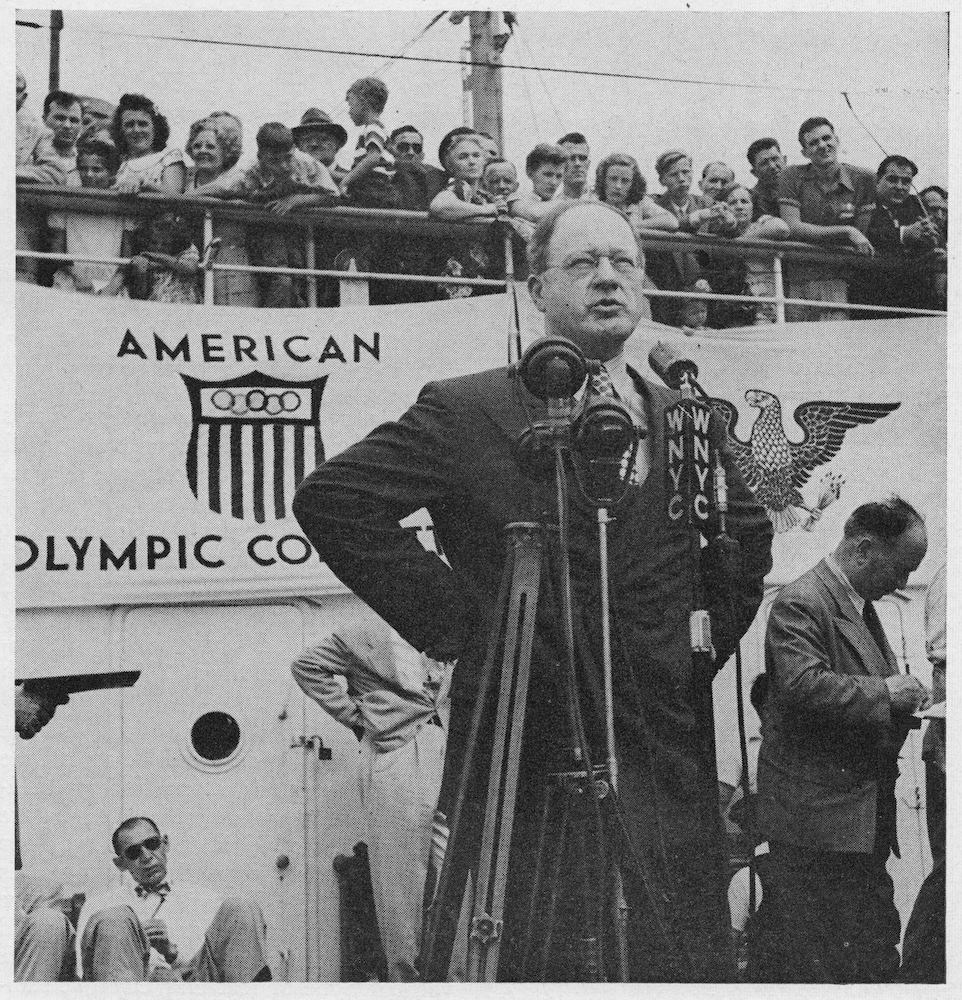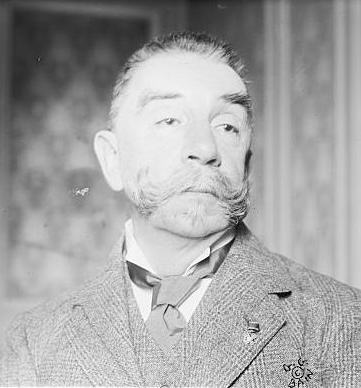Olympian Art of the Ages

The ancient Olympic Games took place every four years between 776 BCE and 393 CE and ceased in the 3rd century because of “pagan” claims by a Christian Roman Emperor. The Games were reinvented and reinstated in 1896 by Frenchman Pierre de Coubertin; his vision was to create “modern” Games that celebrated excellence in body and mind. He proposed an Art and Architecture Olympic competition in 1906 to accompany the Games, premiering at the Stockholm Olympics in 1912.
A Montecito connection to the early 20th century Olympics was an athlete who represented the U.S. in the 1912 Olympics in the Pentathlon, (in his later years, Montecito’s own) Avery Brundage. After completing an engineering degree from the University of Illinois, he capitalized upon the Chicago construction boom in the 1920s. He married wealthy Chicago socialite Elizabeth Dunlop in 1927, and by 1929, he became President of the U.S. Olympic Association. The International Olympic Committee (IOC) admired Brundage’s work; Brundage headed the U.S. Olympic Association for 24 years. In 1946, Brundage purchased the Escondrijo estate on Ashley Road in Montecito, and built a magnificent estate there, “La Pineta,” for which he collected rare Asian art. When the 1964 Coyote Fire destroyed a number of Montecito homes, La Pineta’s 20 room estate, decorated with priceless art, was burned. Brundage then bought the Brünninghausen Estate on Hot Springs Road. During his tenure in Montecito, Brundage owned the Montecito Country Club, El Paseo, the El Presidio block (De la Guerra house), and the Montecito Inn. In lavish Montecito parties, he entertained the blue-blooded members of the
IOC over many years.
Beginning in 1912, Olympic Games included gold, silver, and bronze medals in Olympic Art competitions. The five categories of the arts were called the Pentathlon of Creativity in the tradition of the Greek Muses: architecture, literature, music, painting, and sculpture. The Olympic committee formed an international art jury which formed the rules: a work had to be original, sport inspired, and an artist could submit many entries in many categories as well as compete in sports. The founder of the modern Olympics, de Coubertin, was also a poet and won Gold in the category of literature for his “Ode to Sport.”

The arts figured in the Olympics for over 40 plus years, and in the 38th year the category of Literature expanded to include Epic/Dramatic/Lyric forms, and the category of Art expanded to paintings/prints/watercolors; an Architecture category was added in 1928. Having had a slow start with artwork submissions, by the mid 1920s at the Los Angeles Games in the late 1920s, the Museum of History, Science, and Art during the Olympics saw 384,000 visitors. However, the rules established by the International Olympic Committee in 1948 ran counter to the rules for sports competition; all competitors had to be amateur, and many of the artists who had previously submitted work were career artists, and sold their works submitted during the Olympics. At the last years of the art competitions, Germany had won the most gold medals for art, closely followed by a tie between Germany and France.
Two Sports medalists also won Gold in the Arts category: sculptor, painter, and illustrator Walter Winans won Gold for his sculpture Harness Racer: an American Trotter. He also won gold for Marksmanship. A Hungarian swimmer and architect, Alfréd Hajós, won Silver in town planning and a Gold in swimming.
The connection between the Games and art endures, as we saw in Paris’ 2024 Games opening events. In the Olympic charter the host country is required to have artistic cultural events when the Olympic village is open. Artist Marjane Satrapi in 2024 created five fabulous 9-meter-long wool tapestries that hung in the spaces between the girders of the Eiffel Tower: images of two runners, one male, one female. For other public art spaces she created images of a javelin thrower, and images of two new Olympic entries – a breakdancer and a skateboarder. The tapestries were woven under the artist’s supervision by the famed Gobelins Manufactory established in the 17th century by Louis XIV. Furthermore, the IOC, in conjunction with the City of Paris, chose Los Angeles artist Alison Saar to design works in honor of the Olympic and Paralympic Games 2024. Honoring great women, these sculptural works “pass the torch” – linking the City of Lights to the City of Angels (Olympic Games 2028).
If you want to see more art, please check out the world’s largest collection of Olympic culture and heritage at the Olympic Museum of Lausanne, Switzerland, with an emphasis on the values of respect, friendship, and excellence.







You must be logged in to post a comment.